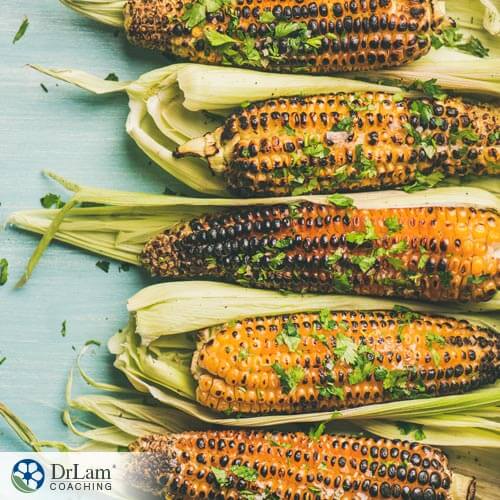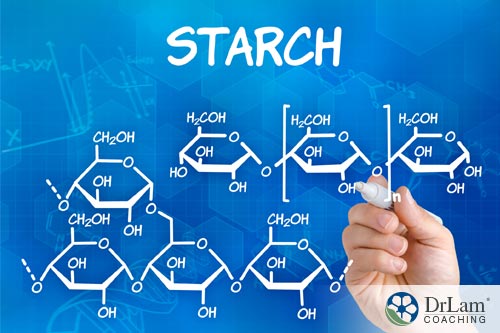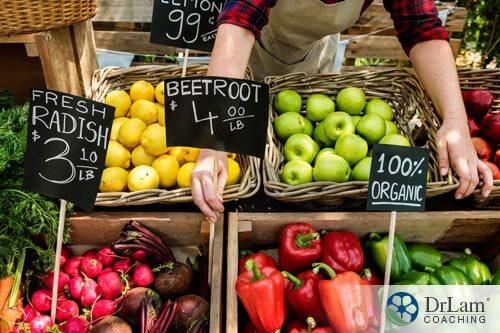 Let’s face it. Starchy veggies have gotten a bad reputation. The world has become obsessed with avoiding carbs no matter what form they come in. It can be confusing, as many veggies are also starches. We are being told to eat our vegetables, but then we are being told to avoid starches due to them being fat-inducing, calorie-ridden, carbohydrates. So, which one is it? Well, dietitians are now arguing that starchy vegetables, like potatoes and corn (a grain many consider to be a vegetable), are in fact, good for you. They contain high levels of potassium and are a great source of the good-type of carbohydrates that your body needs to convert food into energy.
Let’s face it. Starchy veggies have gotten a bad reputation. The world has become obsessed with avoiding carbs no matter what form they come in. It can be confusing, as many veggies are also starches. We are being told to eat our vegetables, but then we are being told to avoid starches due to them being fat-inducing, calorie-ridden, carbohydrates. So, which one is it? Well, dietitians are now arguing that starchy vegetables, like potatoes and corn (a grain many consider to be a vegetable), are in fact, good for you. They contain high levels of potassium and are a great source of the good-type of carbohydrates that your body needs to convert food into energy.
What constitutes a starchy vegetable? Vegetables can be placed into two categories: starchy and non-starchy. Starchy vegetables include:
Many tubers, plants where the part you eat grows beneath the soil’s surface, are considered starchy vegetables.
Starchy vegetables also contain a good portion of vitamins and minerals and are an excellent source of fiber. Most are high in potassium, which is considered a seriously under-consumed nutrient in the common US diet. It is estimated that less than 3% of people get the daily recommended amount of potassium.
Potassium-rich foods can also aid in reducing blood pressure, one of the largest and most dangerous epidemics in chronic disease today. One cup of boiled potatoes contains 13% of a person’s daily required intake, while the non-starchy vegetables don’t contain as much.
Starches are also excellent sources of energy. When you eat starchy vegetables, you increase your blood sugar levels faster because they contain more easily digested carbohydrates than their non-starchy vegetable counterparts. Scientifically speaking, starches are long glucose molecules that are broken into smaller molecules, and in turn, are used for energy. They are called complex carbohydrates and each molecule can carry from three to a billion units of sugar. They take longer to digest than simple carbohydrates and release the glucose into the bloodstream at more efficient rates required by the body.
Don’t get us wrong, non-starchy vegetables are superfoods too. They are an extremely important part of meals and are by no means being downplayed here. You know the ones:
They are some of the most important food items you can eat. Our goal here is to educate you on how important having a variety of vegetables in your diet can be, both starchy and non-starchy.
 The concern about starchy vegetables has to do with how many carbs they contain. If you are trying to lose weight or are diabetic these are things of utmost concern. Carbohydrates take the blame when it comes to weight gain, but most people don’t know that there are different types, some good, and some bad. Corn and potatoes are often looked down upon due to their starchy composition, but they don’t have to be. We’d like you to move out of the “carb-fearing world” and into one where a variety of vegetables and the knowledge of food is the key to a healthy lifestyle. Yes, corn and potatoes are high in carbohydrates, but well-sourced ones should be included in your diet.
The concern about starchy vegetables has to do with how many carbs they contain. If you are trying to lose weight or are diabetic these are things of utmost concern. Carbohydrates take the blame when it comes to weight gain, but most people don’t know that there are different types, some good, and some bad. Corn and potatoes are often looked down upon due to their starchy composition, but they don’t have to be. We’d like you to move out of the “carb-fearing world” and into one where a variety of vegetables and the knowledge of food is the key to a healthy lifestyle. Yes, corn and potatoes are high in carbohydrates, but well-sourced ones should be included in your diet.
Carbohydrates are the primary source of energy for your body. They are required as much as water and air for the body to operate efficiently.
Carbohydrates are compounds consisting of carbon, oxygen, and hydrogen, and are split up into two groups - simple and complex carbohydrates. Simple carbs are in sugars and in honey, fruit, and milk. Complex carbohydrates come along with dietary fiber and starchy foods like vegetables, whole wheat bread, oatmeal, and brown rice. The only difference between the two is how quickly the body can absorb and digest the compounds.
While fruit and milk are sources of simple carbohydrates, they are still good for you. Fruit contains fiber, and milk contains protein, both elements help slow down digestion and the absorption of sugar into the bloodstream. These types of simple carbs should not be confused with processed sugar that most Americans consume from foods like candy, cake, ice cream, cereals, and soft drinks. This type of sugar causes damage to the body, are addictive, and create weight gain that’s hard to lose.
The more stress you are under, the more tempting sugary foods are. If you suffer from chronic-stress-based illnesses like Adrenal Fatigue Syndrome (AFS), it is even more important to avoid sugar and opt for high-energy nutritious food instead.
If you have adrenal fatigue, chronic fatigue is a dominating factor in daily life, and health progressively deteriorates until one is bedridden. Overstressed adrenals cause the organs and all the body’s systems to malfunction. Consuming a diet is full of energy and nutritious foods is a top priority for people with this disorder.
Many illnesses benefit from the extended release of sugars into the bloodstream that starchy vegetables can provide. These foods can be considered part of an “energy medicine” healing plan. One important part of energy medicine consists of monitoring food intake to ensure you are eating a diet rich in foods that convert into the type of energy most appropriate for your body. As a multidisciplinary area of scientific study, energy medicine also focuses on the way energy transfers through the body, it's cells, and tissues - like an energy force field. It has been used since that ancient times and encompasses disciplines from magnetic therapy and energy transferring massages known as Reiki to tai chi, acupuncture, and yoga.
Foods that provide a healthy source of energy to the body balance both the mind and body, a connection that is needed for overall wellness. It is believed that when the body and mind, or conscious and subconscious, are aligned, it creates an energy field that is readily available to respond to the body and its needs.
For a healthy diet, you need to consume carbohydrates daily, including a combination of both non-starchy and starchy vegetables. In the average 2,000 calorie-a-day diet, you should consume 250 grams of carbohydrates. Consider approximately 45-60 grams for meals and 15-30 grams for snacks. A good example of a complete and nutritious meal would be:
When it comes to fiber, add as many veggies to your diet as you can. Both starchy and non-starchy vegetables excel in this department. Most people do not get the fiber they need, which is approximately 25-38 grams a day.
Starchy vegetables should not be considered off-limits. They should be included in most meals, but portion-controlled. Eating a variety of foods will increase the likelihood that you are getting all the energy and nutrients you need daily.
 However, it's important to always use organic ingredients whenever possible to avoid eating foods that are laden with pesticides and other toxins that are harmful to the body. These toxins are harmful to everyone but especially those who suffer from chronic illnesses like AFS. Their bodies are extremely sensitive and are often unable to naturally detoxify.
However, it's important to always use organic ingredients whenever possible to avoid eating foods that are laden with pesticides and other toxins that are harmful to the body. These toxins are harmful to everyone but especially those who suffer from chronic illnesses like AFS. Their bodies are extremely sensitive and are often unable to naturally detoxify.
Here are a couple of simple starchy vegetable recipes great for breakfast or dinner sides:

Starchy vegetables are still a vegetable. They contain a wide variety of nutrients that your body needs for optimal health and should be consumed regularly. As long as you eat them in reasonable portions, they are safe to eat even for people who are diabetic or have weight issues.
